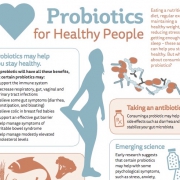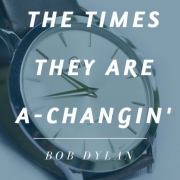Academics working with industry
by Dr. Colin Hill, APC Microbiome Ireland & School of Microbiology, University College Cork, Ireland
Many scientists have reservations about working with industry. While characterising it as going over to the dark side might be an overstatement, there is a certain wariness that principles may have to be compromised (in terms of the ambition of the work and the freedom to follow your nose that is the supposed hallmark of ‘pure’ research), dull routine work may have to be performed, and publication in the best journals will be unlikely. There may also be concerns that students or post-docs working on ‘industry’ projects may suffer from these constraints, which will restrict their career development. There can also be a perception that the ‘best’ scientists work on fundamental problems, unfettered by the demands of industrial partners or short-term commercial goals. Some of you reading this opening paragraph may be amused at the simplicity of this stereotyping – “no one really thinks like that” – but I can assure you that some do, including a younger version of myself.
I have only really worked closely with industry in the last decade. Before that, I wrote grants which assured potential funding agencies that what I wanted to investigate was incredibly relevant and important, would represent good value for the taxpayers’ investment, but was just a ‘little bit too early’ for industry to take on. I genuinely believed this for the most part, although part of getting older is learning that fooling myself has always been a much easier task than fooling anyone else. Nonetheless, I managed to forge a career in science. I had a reasonable success rate of about one in four or five applications, which still seemed a poor return for the effort involved. I would take my hard-earned funding and do my best to deliver on the promises I had made. On occasion, the grants were successful, and we ended up filing a patent or developing a prototype or a process and essentially delivering on the promises made in the grant application. But all too often I discovered that what we had achieved, or the problem we had solved, was not really the burning issue I had thought it to be, or at least could not be translated for the benefit of society without suitable industry partners. In essence, we had self-tasked ourselves to solve a problem that no one really needed to be solved (or, at least not yet, or not in the precise manner we had solved it).
Of course, on occasion I was successful in getting truly ‘fundamental’ or ‘basic’ grants which were simply aimed at generating knowledge, and these were absolutely vital in developing new skills and opening up new research areas and possibilities. However, over the past decade or more, I have begun to work closely with industry partners. At first, this was driven by changes in funding policy in Ireland which linked scientific excellence to industry relevance – grants had to pass rigorous peer-reviewed scientific assessment, but also had to be validated by an industry partner willing to put skin in the game in the form of co-funding. This necessitated finding industry partners and identifying a research problem together, before developing a solution. I hope that now I have a perspective on both aspects of scientific research – often simplistically referred to as basic versus applied research – and I have good news. Working with industry can be just as scientifically rewarding as not working with industry.
As I have experienced it, working with industry has several obvious advantages.
- Relevance. You know the research problem posed is one that genuinely needs solving, and the industrial partner for any solution you may develop is already engaged.
- Funding. Once you begin to work with an industry partner, the prospect of getting funding is much higher than in most competitive grant applications and the amount available may be defined by the extent of the problem, not the limit of a particular funding call.
- Intellectual capital. Most of the industry people you will be dealing with are also scientists, and they are just as clever, or far cleverer, than you (or me). They will have defined goals but also have the same scientific curiosity which can be harnessed within the project.
- Flexibility. If you have embarked on the project and you find you have gone down a blind alley, it is usually possible to have a discussion with your partners and change the project design. You don’t have to go back to the funders for permission to adjust the dreaded Gantt chart and ‘deliverables’, or have to justify to grant reviewers why you have gone off track. If a project extension is required you can often simply argue for it, no need to write a new grant and experience the inevitable downtime ‘between funding’.
- Urgency. Working with a student or a post-doc on a problem can be exciting, but sometimes a good or a bad result seems important only to the two of you. It really adds urgency when an industry meeting is looming on the horizon, when you know the funders are directly invested in the outcomes of the experiments, and when the pressure really builds on the team. In these moments some intense brainstorming and problem-solving can be required, which can create a real sense of excitement within the project and which can be a tremendous learning experience for junior members of the team.
- Career development. Most of the students and postdocs in the lab will not end up in academia, nor should they. It is valuable training for young scientists to have a first-hand exposure to industry-based science so that they can make an informed choice on their next step in their career.
Are there negatives? Well, honestly, not all industry sponsored research involves cutting edge science. But if you are completely uninterested in the outcomes then don’t take it on. What about bias? Does industry funding create a bias towards positive outcomes? I genuinely have not found this to be the case. Reputable industry partners have no interest in biased results, since the company’s reputation is at stake and of course, no one is more invested in the scientific validity of their product than the industry partner. And given that science is ultimately self-correcting no reputable scientist wants to be associated with misleading outcomes. Individuals on either side can make mistakes or display bias, but that is no less true in the basic sciences.
The ideal academic-industry relationship recognises that there have to be rewards for both partners. For both it is really important that the experiments be conducted to the highest possible standards with appropriate controls. For the academic the right to publish the results in a timely fashion is particularly important when junior scientists are involved and a clear understanding of how results will be disseminated must be reached before the collaboration gets underway. For the industry partner, it is important that the work stay focused on the agreed goals of the project and not veer off into the ‘nice to know’ rather than ‘need to know’ areas of the research problem. As in most things, problems can be avoided by having a clear agreement on the goals, methods and publication strategy and having transparent reporting structures. Further, both sides must put effort into maintaining a good working relationship.
Finally, it is not a binary choice – working with industry obviously does not close off any other type of research you may want to perform. You can still write grants and get funding from other sources. In fact, I would propose that the ideal research mix requires an element of exploratory science to keep the laboratory fresh and industry-funded science to ensure relevance. And when in doubt always defer to the great Louis Pasteur, who said “There are no such things as applied sciences, only applications of science”.














